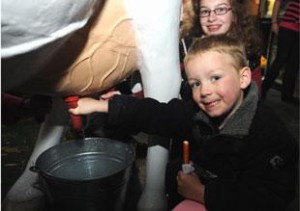Twenty-six species of Cryptosporidium have been recognised and 18 species declared non-valid in a recent shake-up of the parasite’s taxonomy using DNA sequencing techniques.
 Cryptosporidium is the second biggest cause of infant diarrhoea and death in developing countries, and is found across 95 nations, including Australia.
Cryptosporidium is the second biggest cause of infant diarrhoea and death in developing countries, and is found across 95 nations, including Australia.
The parasite spreads by reproducing in the small intestine of its hosts, generating spore-like oocysts that are shed in the faeces and then consumed in contaminated food or water.
Current testing for Cryptosporidium relies on immunoassays and microscopy, techniques that can identify the presence of oocysts, but not their species.
Since 20 of the 26 species are known to infect humans, this can have important implications for public health.
“Most of [the oocysts] look the same under the microscope, so the only way you can tell them apart is by looking at their DNA,” says Murdoch University Professor Una Ryan, who worked with the US Centre for Disease Control and the US Department of Agriculture on the taxonomy project.
The team used a variety of DNA sequencing and typing techniques to identify gene fragments that are used to characterise each species.
